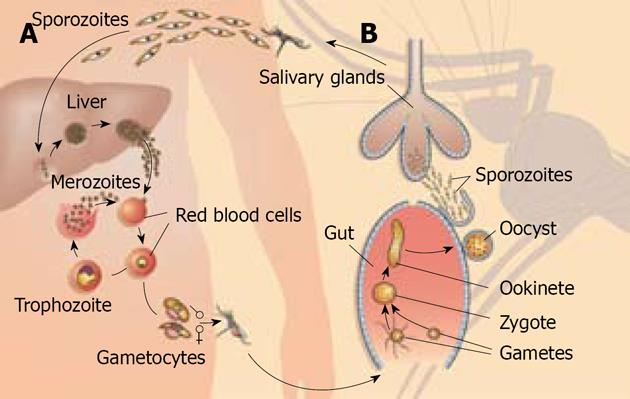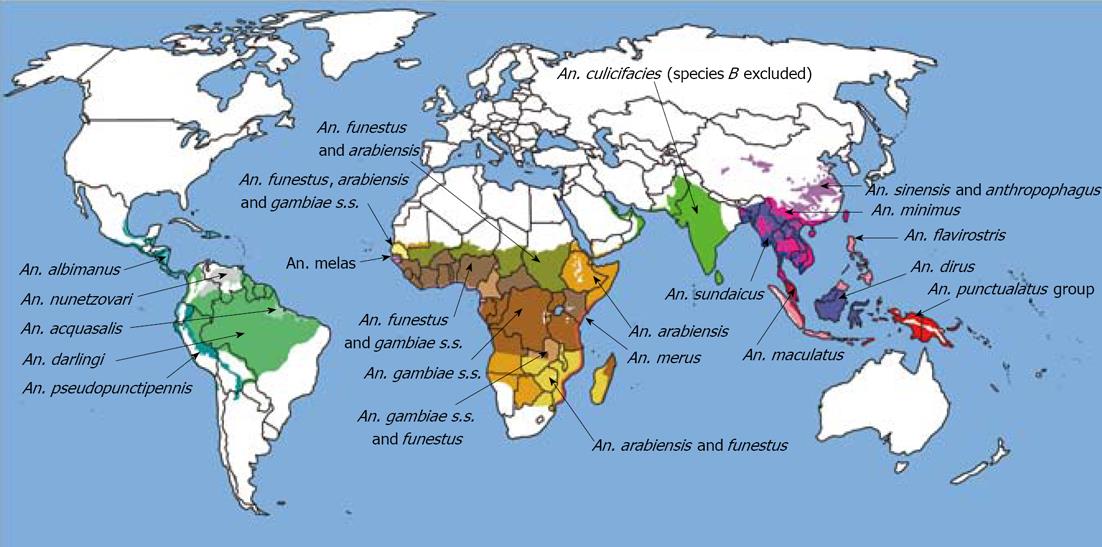Copyright
©2012 Baishideng Publishing Group Co.
World J Transl Med. Aug 12, 2012; 1(2): 4-19
Published online Aug 12, 2012. doi: 10.5528/wjtm.v1.i2.4
Published online Aug 12, 2012. doi: 10.5528/wjtm.v1.i2.4
Figure 1 Plasmodium life cycle.
A: In the human host, infected female Anopheles mosquitoes inject the sporozoite form of the parasite during a blood meal. Sporozoites reach the liver through the bloodstream, where they proliferate asexually, and then, as merozoites, invade red blood cells, evolve and eventually generate male and female gametocytes which are transmitted back to the mosquito; B: In the mosquito vector, gametocytes fuse to form zygotes and differentiate to form oocysts that duly divide to create sporozoites in the mosquito midgut. These migrate to the salivary glands, where the cycle of infection starts again.
Figure 2 Map of the world showing the distribution of the most important anthropophilic Anopheles mosquitoes which are currently considered vectors of malaria.
An.: Anopheles; s.s.: sensu stricto
- Citation: Micale N. Recent advances and perspectives on tropical diseases: Malaria. World J Transl Med 2012; 1(2): 4-19
- URL: https://www.wjgnet.com/2220-6132/full/v1/i2/4.htm
- DOI: https://dx.doi.org/10.5528/wjtm.v1.i2.4














